Yesterday (December 28, 2014), an AirAsia flight QZ8501 from Indonesia to Singapore lost contact. It is reported that the plane had requested to change the route before losing contact, and now has lost contact with the ground and its whereabouts are still unknown. In this regard, an official from the Indonesian Ministry of Transportation said that before the plane lost contact with the ground, the pilot had requested an "unusual" route to avoid clouds, and then lost contact with the ground. AirAsia said in a statement that the plane encountered bad weather during the flight. The Indonesian Ministry of Transportation said that the plane did not send a distress signal before losing contact.
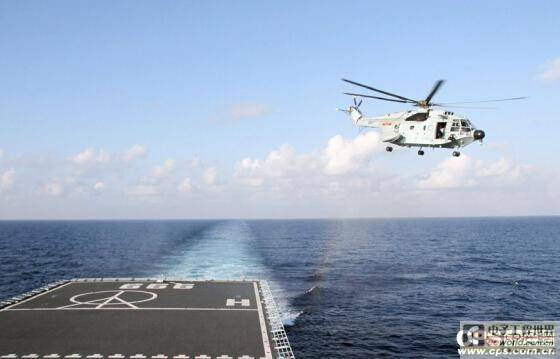
Exploring the underwater world with sound
In the "AirAsia incident", how difficult and how intense the search was? These are all concerns. The missing flight involves air, sea and underwater searches, and the search area often extends to the wider and deeper Indian Ocean. The use of more deep-sea detection and search equipment is also a normal part of the search.
I remember that the "Malaysia Airlines incident" not long ago is still a "mystery". The search area extends from Central Asia in the north to the South Indian Ocean in the south, from the South China Sea in the east to the Andaman Sea in the west. At most, 26 countries participated in the search. Both the search area and the scale set a new record for international rescue, but there is still no news about the passenger plane. In view of the many plane loss incidents this year, whether the plane can successfully reach the destination has become more and more concerned. Hereby discuss the "fiber optic underwater sound detection technology".
Relevant industry insiders once introduced: "The underwater search and detection technologies are basically the same, and humans basically rely on 'sound' for underwater detection and search."
Try putting your ears in the water to see what sounds you can hear? Where do these sounds come from? In the deep sea, which is completely different from the land environment, the propagation of sound will also undergo unexpected changes. It is understood that if the sea water releases "smoke bombs", this is exactly the huge problem faced by the search and rescue team when monitoring and locating the black box signal of the missing flight. The human hearing system is not designed for the underwater environment. After diving into the water, everything you "hear" becomes blurred, as if everything underwater becomes slow and depressed in the hazy sound, and the deep seabed is absolutely silent. In fact, sound can propagate in water at a speed five times faster than in air.
A series of high-tech products, such as underwater sounders, sonar buoys and towed sonar locators, are conducting microscopic monitoring of the seabed. Usually, these machines that replace human ears can detect global ocean and weather changes on the seabed, including earthquakes and naval movements of other countries. However, they are still affected by underwater sound waves, because sound "does not take the usual path" under water, and can change the propagation direction at any time due to the density of the water body. Sometimes it can even make a 90° turn to "avoid" the detection instrument, which undoubtedly adds difficulty to underwater exploration of black box signals. The signal of the aircraft black box has a very high frequency, which exceeds the highest frequency audible to the human ear. In this way, although the signal of the black box cannot be transmitted far, it helps the search and rescue team to accurately locate it. There is also noise pollution underwater. Different sounds moving in the water are very likely to affect the sound signal transmitted by the black box.
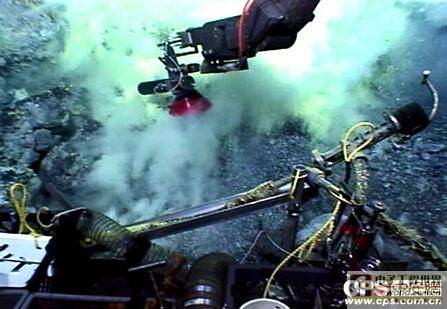
Underwater sound detection equipment such as underwater sound detectors, sonar buoys and towed sonar locators are basically based on underwater sonar technology, and the application focus of underwater sonar technology is anti-terrorism security in waters. At present, most of the water monitoring security measures are concentrated on the area above the water surface, while the security link in the underwater area is weak. Terrorist forces or hostile parties may use submarines, underwater frogmen, robots and small underwater vehicles to take advantage of the situation and destroy water facilities, causing major property losses and threatening personnel safety. Therefore, it is a top priority for national defense security to establish a complete underwater security mechanism, implement strict monitoring of key waters, and ensure the safety of key facilities. At present, the main means of underwater protection and monitoring in various countries around the world is to use detection sonar systems. Sonar is an electronic system equipment that uses the propagation characteristics of sound waves underwater to complete underwater detection and communication tasks through electroacoustic conversion and information processing. During World War II, the German army created the famous "wolf pack tactics" in the history of naval warfare. Sonar played a huge role in the process of German submarines discovering and destroying targets.
However, in February 2009, an incredible underwater "close contact" between British and French submarines brought the term "sonar" - an ancient term that is full of modern high-tech flavor - to the world. In this incident, the British nuclear submarine "Vanguard" and the French nuclear submarine "Triumph" collided violently underwater in the Atlantic Ocean. Foreign media commented that two submarines cruising underwater in the ocean are like letting two bees fly around in a huge gymnasium. Whether they can collide depends on the eyes and ears of both sides, and the sonar system is the eyes and ears of the submarine. It is known as the killer of underwater confrontation. What is the problem that caused the collision of submarines? How does the sonar system work, and what are the shortcomings? (Click to the next page)
How Sonar Systems Work Underwater
Sonar: Sonar is the transliteration of the English abbreviation SONAR, and its full English name is "Sound Navigation And Ranging". It is an electronic device that uses the propagation characteristics of sound waves underwater to complete underwater detection and communication tasks through electroacoustic conversion and information processing. There are two types: active and passive. Active sonar: Sonar actively emits sound waves to "irradiate" the target, and then receives the echo reflected by the target in the water to determine the parameters of the target. Most of them use a pulse system, and some use a continuous wave system. It evolved from a simple echo detection instrument. It actively emits ultrasonic waves, and then receives the echo for calculation. It is suitable for detecting icebergs, reefs, shipwrecks, sea depths, fish schools, mines and hidden submarines with their engines turned off.
Passive sonar: passively receives the radiation noise generated by underwater targets such as ships and the signals emitted by hydroacoustic equipment to determine the target's position. It evolved from a simple hydrophone, which listens to the noise emitted by the target to determine the target's position and certain characteristics. It is particularly suitable for submarines that cannot make sounds to expose themselves but need to detect enemy ship activities.
If active sonar is the mouth and ears, from shouting to hearing the echo, and determining the distance to the target, then passive sonar is only the ears, listening to various sounds, and can only estimate the position and direction.
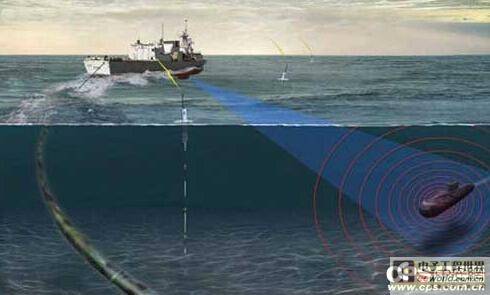
Active sonar: actively emits ultrasonic waves, then receives and measures the target echo for judgment. The test accuracy is high, but it is easy to be exposed and discovered, and is not suitable for covert detection sites. Passive sonar can covertly listen to the noise emitted by the target to determine the target's location and characteristics, but the test readiness is not high. In response to underwater sonar technology, countries are also vigorously conducting research and development of anti-sonar systems.
Anti-sonar system: It can absorb sonar waves. Currently, it can absorb 96% of the total sonar waves and only reflect 4% back, so that it is difficult for the opponent's sonar to detect the existence of the submarine. At the same time, the noise reduction level of submarines in various countries is getting higher and higher, and the anti-detection capability is getting stronger and stronger.
At present, the hydrophones used in underwater acoustic detection are generally acoustic pressure hydrophones, which can only obtain the sound pressure scalar of the sound field. The particularity of the underwater environment makes sound waves the main information transmission tool, and also puts forward many restrictions on the long-term use of electromagnetic devices underwater. Traditional piezoelectric ceramics have the disadvantages of high noise, small dynamic range, poor anti-electromagnetic interference and signal crosstalk, bulky structure, and unsuitable for long-distance transmission and networking.
Fiber optic hydrophone is an underwater acoustic signal sensor based on optical fiber and optoelectronic technology. It can convert underwater acoustic signals into optical signals, and then transmit them to the signal processing system through optical fiber to extract acoustic signal information. It has the characteristics of high detection sensitivity, good frequency response characteristics, wide frequency band, large dynamic range, strong resistance to electromagnetic interference, static pressure and corrosion resistance, small size, light weight, etc. It also has the advantages of easy all-weather real-time detection and identification, easy integration and networking. Fiber optic hydrophones can be divided into interference type, intensity type, grating type, etc. according to the principle. (Click to the next page)
Working principles of three typical fiber optic hydrophones
Interference type
Interferometric fiber optic hydrophone is constructed based on the principle of optical interferometer.
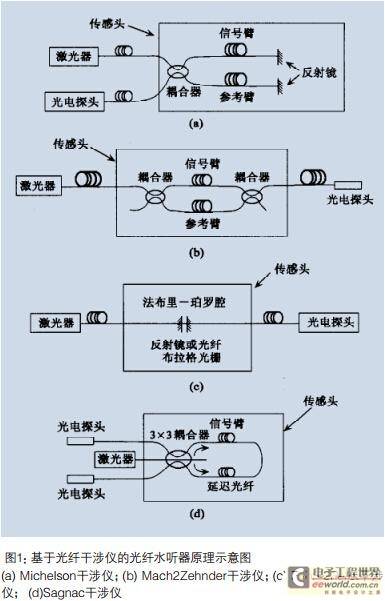
Figure 1(a) is a schematic diagram of the principle of the fiber optic hydrophone based on the Michelson fiber interferometer. The laser light emitted by the laser is divided into two paths through the 3dB fiber coupler: one path constitutes the sensing arm of the fiber optic interferometer, which receives the modulation of the sound wave, and the other path constitutes the reference arm, which provides the reference phase. The two beams are reflected by the rear reflective film and return to the fiber optic coupler, where interference occurs. The interfering optical signal is converted into an electrical signal by the photodetector, and the information of the sound wave can be picked up after signal processing.
Figure 1(b) is a schematic diagram of the principle of the fiber optic hydrophone based on the Mach2Zehnder fiber interferometer. The laser is divided into two paths by a 3dB fiber coupler, passing through the sensing arm and the reference arm respectively, and then combined by another coupler to cause interference, and the sound signal is picked up after conversion by a photoelectric detector.
Figure 1(c) is a schematic diagram of the principle of a fiber optic hydrophone based on a Fabry2Perot fiber interferometer. A Fabry2Perot interferometer is formed by two reflectors or a fiber Bragg grating. When the laser passes through the interferometer, multi-beam interference is formed, and the acoustic signal is obtained by demodulating the interference signal.
Figure 1(d) is a schematic diagram of the principle of a fiber optic hydrophone based on a Sagnac fiber interferometer. The core of this type of fiber optic hydrophone is a Sagnac fiber ring consisting of a 3×3 fiber coupler. When the laser propagates clockwise or counterclockwise through the signal arm, the symmetry is destroyed, forming a phase difference, and when it returns to the coupler, it interferes, and the interference signal is demodulated to obtain the acoustic signal.
The advantages of fiber optic hydrophone based on Sagnac interferometer are as follows: ① The phase noise of the light source will not be converted into the intensity noise of the system, while based on Michelson and MachZehnder interferometers, the phase noise of the light source will be converted into system noise; ② It does not require a narrowband light source and can be replaced by a broadband superfluorescent light source; ③ Polarization fading is minimized. However, fiber optic hydrophone based on Sagnac interferometer also has disadvantages, such as low frequency insensitivity and difficulty in multiplexing.
Figure 1: Schematic diagram of the principle of a fiber-optic hydrophone based on a fiber-optic interferometer
(a) Michelson interferometer; (b) Mach-Zehnder interferometer; (c) Fabry-Perot interferometer; (d) Sagnac interferometer
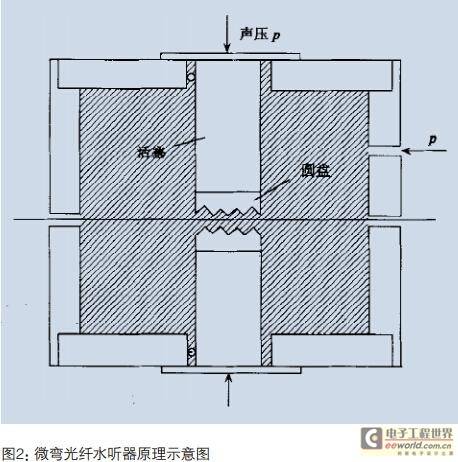
Intensity
The intensity-type fiber optic hydrophone is based on the principle that the intensity of light transmitted in the optical fiber is modulated by sound waves. This type of fiber optic hydrophone was developed earlier. The main modulation forms include fiber micro-bend type, fiber twisted type, frustrated total internal reflection type and grating type.
The micro-bend fiber hydrophone is a fiber hydrophone made based on the principle that the optical power changes due to the micro-bend loss of the optical fiber. The principle is shown in Figure 2: two piston-type components are modulated by the sound pressure, and their tops are disks with concave and convex stripes. The piston pushes the optical fiber, and the optical fiber loses and changes due to bending. In this way, the light intensity of the output optical fiber is modulated, and the sound pressure signal of the sound field can be obtained by converting it into an electrical signal.
Fiber Bragg Grating Type
The fiber Bragg grating hydrophone is based on the principle that the resonant coupling wavelength of the grating moves with the change of external parameters. At present, the fiber Bragg grating hydrophone is generally based on the fiber Bragg grating (B r ag) grating structure, as shown in Figure 3. When the output light wave of the broadband light source (BBS) passes through a fiber Bragg grating (FBG), according to the mode coupling theory, the light wave with a wavelength that meets the Bragg condition λB = 2 neffΛ will be reflected back, and the light waves of the remaining wavelengths will be transmitted. In the formula, λB is the resonant coupling wavelength of the FBG, that is, the central reflection wavelength, neff is the effective refractive index of the fiber core, and Λ is the grating pitch. When the stress around the sensing grating changes with the sound pressure in the water, it will cause the change of neff or Λ, thereby generating the corresponding central reflection wavelength offset of the sensing grating. The offset is determined by ΔλB = 2ΔneffΛ + 2 neffΔΛ, thus realizing the wavelength modulation of the reflected signal light by the water acoustic pressure. Therefore, by detecting the central reflection wavelength deviation in real time and then according to the linear relationship between Δneff, ΔΛ and sound pressure, the information of sound pressure change can be obtained.

For the intensity type, factors such as the fluctuation of the light source, fiber bending, connection loss and detector aging will affect the measurement accuracy. The interference type has high sensitivity, low signal transmission loss through the optical fiber, no crosstalk, and can achieve long-term and stable operation in harsh underwater and underground environments. However, to observe the changes in the interference fringes, this requires clear interference fringes. To obtain clear interference fringes, the two interference lights must have equal light intensity and good monochromaticity. In addition to the advantages of ordinary sensors, the fiber Bragg grating sensor has the advantages of wavelength modulation, which is not affected by the fluctuation of the light source intensity. It can conveniently use wavelength division multiplexing technology to connect multiple Bragg fiber gratings in series in one optical fiber for distributed measurement.
The significance of fiber optic hydrophone to underwater security
The U.S. Naval Research Laboratory published the first paper on fiber-optic hydrophones in 1976, which was the first exploratory study of fiber-optic hydrophones. So far, the United States has reached a high level in the research of fiber-optic hydrophones. Due to the adaptability of the geometric shape of fiber-optic hydrophones, not only can they be made into very long linear sensors, but they can also be made into conformal sensors that are evenly attached to the hull. Although considerable progress has been made in the research of fiber-optic hydrophones, there is still a certain gap from the realization of engineering and equipment. Due to the complexity of the underwater sound field, fiber-optic hydrophones are mainly used in the form of arrays in the military. The low-cost realization of distributed arrays is the key to the application of fiber-optic hydrophones in actual combat.
The fiber optic voice array is an underwater three-dimensional sound field signal sensor based on optical fiber and optoelectronic technology. It converts the sound wave velocity signal into an optical signal through highly sensitive optical coherence detection, and transmits it to the signal processing system through optical fiber to extract the sound wave information. The system has the characteristics of an optical fiber network and can be formed on a large scale to achieve large-scale underwater acoustic monitoring.
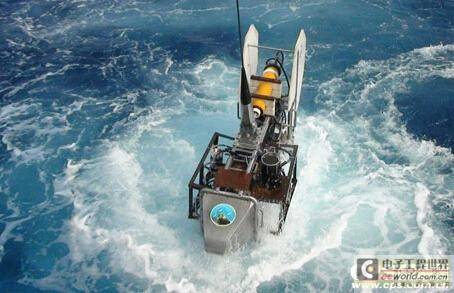
Since the mid-1980s, countries have focused their research on fiber-optic hydrophone technology on how to take advantage of the low transmission loss and large transmission bandwidth of optical fiber, combined with the latest advances in integrated optoelectronic devices, to achieve multiplexing of light sources, optical fibers, and photodetectors, and form distributed fiber-optic hydrophone arrays with fewer components. This reduces both system costs and the complexity of maintenance. Moreover, by processing the array signals, the detection performance of the entire multiplexing system can be greatly improved, and more information about underwater targets can be obtained. my country began research on fiber-optic hydrophones during the Seventh Five-Year Plan, and included it in the research plan during the Eighth and Ninth Five-Year Plans. From laboratory principle research to field water tests, certain progress has also been made. Fiber-optic hydrophone research
During the 15th Five-Year Plan, the research continued in many domestic units, and breakthroughs were made in key technologies. However, most of the research on fiber-optic hydrophones in my country is still at the theoretical and laboratory level, and the degree of practical and engineering application is not high. With the increasing complexity of the modern warfare environment, more advanced and effective weapons and equipment are needed to be used in the military. As an important equipment, fiber-optic hydrophones also need to accelerate the pace of research and learn from foreign advanced technologies. Serve the border security of our country's waters and contribute to the improvement of our country's underwater scientific and technological strength. (Shanghai Fudan Intelligent Monitoring Equipment Co., Ltd. provides technical information, and some pictures in this article are from the Internet)
Previous article:Build a secure wireless security system
Next article:Discussion on the construction of active defense integrated security system for cultural and museum venues
- Popular Resources
- Popular amplifiers
- Mir T527 series core board, high-performance vehicle video surveillance, departmental standard all-in-one solution
- Akamai Expands Control Over Media Platforms with New Video Workflow Capabilities
- Tsinghua Unigroup launches the world's first open architecture security chip E450R, which has obtained the National Security Level 2 Certification
- Pickering exhibits a variety of modular signal switches and simulation solutions at the Defense Electronics Show
- Parker Hannifin Launches Service Master COMPACT Measuring Device for Field Monitoring and Diagnostics
- Connection and distance: A new trend in security cameras - Wi-Fi HaLow brings longer transmission distance and lower power consumption
- Smartway made a strong appearance at the 2023 CPSE Expo with a number of blockbuster products
- Dual-wheel drive, Intellifusion launches 12TOPS edge vision SoC
- Toyota receives Japanese administrative guidance due to information leakage case involving 2.41 million pieces of user data
- LED chemical incompatibility test to see which chemicals LEDs can be used with
- Application of ARM9 hardware coprocessor on WinCE embedded motherboard
- What are the key points for selecting rotor flowmeter?
- LM317 high power charger circuit
- A brief analysis of Embest's application and development of embedded medical devices
- Single-phase RC protection circuit
- stm32 PVD programmable voltage monitor
- Introduction and measurement of edge trigger and level trigger of 51 single chip microcomputer
- Improved design of Linux system software shell protection technology
- What to do if the ABB robot protection device stops
- Analysis of the application of several common contact parts in high-voltage connectors of new energy vehicles
- Wiring harness durability test and contact voltage drop test method
- From probes to power supplies, Tektronix is leading the way in comprehensive innovation in power electronics testing
- From probes to power supplies, Tektronix is leading the way in comprehensive innovation in power electronics testing
- Sn-doped CuO nanostructure-based ethanol gas sensor for real-time drunk driving detection in vehicles
- Design considerations for automotive battery wiring harness
- Do you know all the various motors commonly used in automotive electronics?
- What are the functions of the Internet of Vehicles? What are the uses and benefits of the Internet of Vehicles?
- Power Inverter - A critical safety system for electric vehicles
- Analysis of the information security mechanism of AUTOSAR, the automotive embedded software framework
- Start the Allwinner V853 platform GUI "Hello World!" journey in 5 minutes
- How to detect idle in input capture mode of STM32
- Design of DSP Embedded TCP/IP Network Communication System
- Is the chip industry about to change? Nvidia launches its first CPU, which achieves ten times the performance of x86
- Importance and necessity of wiring harness tester in new energy vehicle wiring harness production
- PADS9.5 usage help, cancel drilling frame format
- What do you think about mobile phones supporting UWB?
- C2000 F28002x Real-Time Control MCU Family
- EEWORLD University Hall----Live Replay: Microchip implements secure authentication through TrustFlex secure element and Microsoft Azure
- si4010 new construction project issues

 MAX987EXK
MAX987EXK











 京公网安备 11010802033920号
京公网安备 11010802033920号